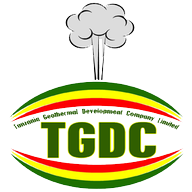Northern Zone
1.Natron geothermal Site
The field is located within Ngaresero village around Lake Natron in Arusha region, Northern Tanzania near the Kenya border. The Lake is fed by Southern EwasoNg’iro River which arises from central Kenya. The lake covers a maximum of 57 km long and 22 km wide where in the western shore of the lake comprises by multiple hot springs while the eastern side comprises multiple of warm springs.
Natron Geothermal field is within the eastern branch (Gregorian rift) of the East African Rift. It is dominated by Cenozoic volcanic, consisting of basaltic lava flows which are sub-vertical on the more recently faulted western margin. The active volcanic activities in the area are the presence of the recent Shimo la Mungu crater, eruptive of OldonyoLengai Mountain (last eruption in 2006) and the volcanic cones
2.Eyasi geothermal site
This field is located on the Eastern side of Lake Eyasi which is a shallow endorheic Salt Lake on the floor of the Great Rift Valley at the base of Serengeti plateau south of Serengeti National Park and immediately south of Ngorongoro caldera in the Eyasi- Wembere sub-rift branch of East Africa Rift System.
The geology of the site is dominated by gneiss basement rocks that are distributed in the field. The basement rocks are associated with NE-SW trending lineaments which seem to be a fault due to presence of a well-developed scarp.
3.Manyara geothermal site
The site is located on the western side of Lake Manyara in the Lake Manyara National Park in Arusha Northern Tanzania.The field is located in the eastern arm of the East Africa Rift System. The geology of the site is dominated by gneiss basement rocks that are distributed in the field. The basement rocks are associated with NNE- SSW trending lineaments which seem to be a fault due to presence of a well-developed scarp.
Lake Manyara is associated with different minerals including the olive green clays likely to be bentonitic in composition which occur in association with other lacustrine sediments. These bentonites were formed as a result of volcanic ashes alteration when deposited in saline water of Lake Manyara.
Radiocarbon dates from four diatom horizons indicate ages ranging from 12 Ka to 135 Ka suggesting a Mid-Holocene age. Middle Pleistocene ages have been assigned to the ridged oncolites of Lake Manyara. The olive green colored clays in the Manyara basin are known to occur in association with other lake beds including phosphorite deposits, stromatolites, bioturbatedsilty clays, partly silicified marls, conglomerates and olive green colored opal beds.
4.Ngorongoro crater geothermal site
Ngorongoro caldera is located in Ngorongoro Conservation Area about 180 Km west of Arusha region, Northern Tanzania. It is believed to be the world’s largest inactive, intact and unfilled volcanic caldera recognized as one of the seven natural wonders in Africa.
The field is located within the Eastern branch of the East African rift system which runs from Lake Turkana in Kenya to Northern Tanzania. Ngorongoro is thought to have formed about 2.5 million years ago from a large active volcano whose cone collapsed inward after a major eruption, leaving the present vast, unbroken caldera as its chief remnant. It is 610 meters deep and its floor covers 260 square kilometers.
The seasonal Salt Lake at the center of the caldera is fed by Munge stream to the north and Ngoitokitok Spring. The field is characterized by Quaternary volcanic rocks and there are no documented structures in the area. Surface geothermal manifestations in the area include the hot springs which well up through unconsolidated scree deposits.

